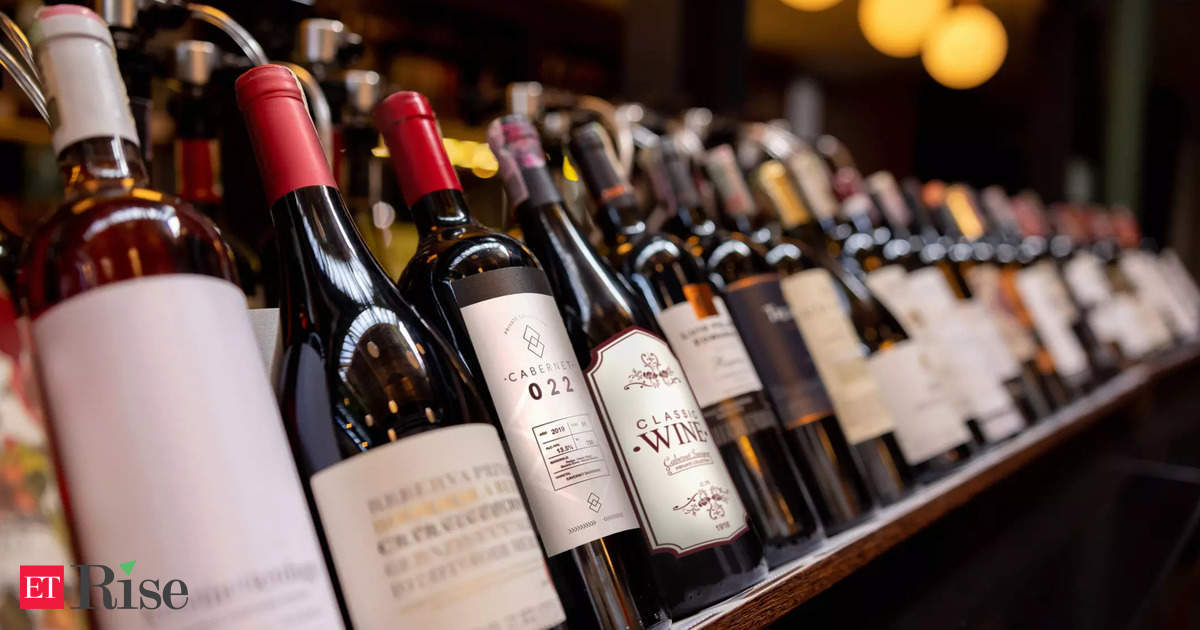When the Norman Conquest of 1066 installed a French feudal aristocracy in the British Isles, the invaders brought with them their love of winemaking. Those skills flourished under the conditions of the Medieval Warm Period, a period of unusually high temperatures from about 950 to 1250 that allowed vineyards to spread across the well-drained chalky soils of southern England. However, the mild conditions gave way to a frigid period known as the Little Ice Age, which prevailed until the 19th century. As the climate cooled, English viticulture collapsed.
This should be a worrying example if you’re a winemaker. Vines are notoriously sensitive to the smallest changes in landscape and climate. Those with an expert palate (I’m not one of them) can supposedly pick up on the subtlest environmental effects in a bottle of wine. came —whether the winter preceding the harvest was warm or cold, whether the harvest was wet or dry, whether the grapes were grown on a north- or south-facing slope.
It doesn’t take much imagination to see how a warmer climate could wreak havoc on this front. If you own a semiconductor factory, your weather exposures will occur on a macro scale. Will stronger storms flood the place, and hotter summers drive up my air conditioning bill? A winemaker, on the other hand, has to think about micro issues. Will a few warmer nights or scorching days in the growing season upset the delicate balance of sugar and water formation in developing clusters? And will that make the resulting bottles less fragrant or complex than they would otherwise be?
 Bloomberg
BloombergFor winemakers In Europe, a new climate headache is looming. geographical indications For nearly a century, European agricultural producers have built a complex intellectual property system around the idea that certain types of food and drink are regionally distinctive and have names that must be protected through copyright law. There is even a line about geographical indications in the Treaty of Versailles, the document that formally ended World War I.
Recognition of geographical indications is a basic hurdle for any nation hoping to strike a trade deal with the European Union and gain access to the world’s second-largest market. That’s why sparkling wine producers in most of the world can’t call their product Champagne, and why Australian and Canadian producers of fortified white wine these days label their bottles “Apera,” because only those from Spain’s Jerez region can be called Sherry. A total of 1,646 of the 1,658 geographical indications for wine listed on the European Union’s eAmbrosia registry are from EU countries. Of the remainder, five are in the UK, four in China, two in the US (Napa Valley and Willamette Valley) and one in Brazil.
Adding those geographic boundaries might have seemed like a good idea during the stable climate of the 20th century, but in the more disordered era we’re now moving into, it’s a risk. Many geographical indications assign a specific grape variety to a specific region. Barolo, arguably Italy’s most revered style of wine, must be grown only with Nebbiolo grapes in a handful of communities among the misty mountains of Piedmont. As a warming planet makes northern Italy’s climate more like that of the more southern regions where Nebbiolo can’t thrive, the rigidity of Barolo’s geographical indication risks driving it to extinction.

European researchers recently analyzed 1,085 wine geographical indications across the continent to determine which were most at risk from global warming. What they found should worry winegrowers: a swath of the country is highly vulnerable to the effects of climate change and has little natural capacity to adapt.
 Bloomberg
Bloomberg“Sharp production declines are expected in northern Italy, central Spain, Greece and Bulgaria,” they wrote, “and reduced suitability for Spain, parts of France, central and northern Italy and large parts of Eastern Europe.” In Burgundy, regions known for the Pinot Noir grape may eventually be unable to grow the variety. The geographical indication system needs to be rethought to allow winegrowers to change their practices as the climate warms, they argued.
This shouldn’t be impossible. Champagne, grown at the northern edge of viticulture and traditionally considered the product of a harsh environment, is traditionally made from just three grape varieties: Pinot Noir, Chardonnay and Meunier. But there are four other, less famous varieties that can be added to the blend, which may provide a way to preserve the wine’s characteristics even now that Champagne’s climate is beginning to more closely resemble that of southern France. Another variety, known as Voltis, has been selectively bred as part of a deliberate effort to prepare for the effects of a warmer climate.
For many wine regionsIt will be a wrenching change. What makes European wine unique is the combination of a particular grape and winemaking practice with the soil, climate and intangibles of a particular region. That kind of thinking will have to change as the planet warms. If Europe’s wine producers don’t want to suffer the fate of medieval English vineyards, they will have to adapt before they disappear.
Disclaimer:
The information contained in this post is for general information purposes only. We make no representations or warranties of any kind, express or implied, about the completeness, accuracy, reliability, suitability or availability with respect to the website or the information, products, services, or related graphics contained on the post for any purpose.
We respect the intellectual property rights of content creators. If you are the owner of any material featured on our website and have concerns about its use, please contact us. We are committed to addressing any copyright issues promptly and will remove any material within 2 days of receiving a request from the rightful owner.

